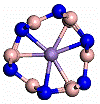Department of Physics and Astronomy: Publications and Other Research

Stephen Ducharme Publications
Document Type
Article
Date of this Version
2014
Citation
Laboratory Manual for Physics of Lasers and Modern Optics, 13th ed., 108 pages, © 2014, Stephen Ducharme, University of Nebraska.
Abstract
You will encounter challenging puzzles and explore new and exciting physical phenomena. You will be provided with sufficient tools, guidance and other resources, but what you learn depends on your inquisitiveness and creativity. This laboratory course is designed to serve two purposes: 1) To explore a variety of physical principles using the fascinating and diverse behavior of light. 2) To learn some of the principles behind the pervasive and expanding area of optical and laser technology. This course is suitable for students of science, life sciences, and engineering, or any student who is curious about light. The prerequisites are the level of quantitative sophomore Physics 142 or Physics 212 or an equivalent background covering basic electromagnetism and optics. A quantitative laboratory course in the sciences or in engineering is also a prerequisite. Lasers and modern optics is perhaps the fastest growing area of scientific research and technological development. Most professionals in physics, astronomy, other sciences, and most engineering disciplines will employ lasers or modern optical technology at some point in their careers. For example, lasers are used in astronomy, biology, chemistry, dentistry, entertainment, forestry, geology, holography, inspection, laproscopy, medicine, nuclear physics, ophthalmology, physics, recycling, surgery, telecommunications, urology, video, welding, xerography, zoology– the list goes on and on.
Experiment 1: ................................. Laser Safety
Experiment 2: ....................... Optical Detector Physics
Experiment 3: ................ Fundamentals of Laser Operation
Experiment 4: ........................... Geometrical Optics
Experiment 5: ................................. Polarization
Experiment 6: ............................. Gaussian Beams
Experiment 7: ............................... Optical Fibers
Experiment 8: .................... Semiconductor Diode Lasers
Experiment 9: ......................... Optical Spectrometers
Experiment 10: ............ Holography and Phase Conjugation
Experiment 11: ................. Electro- and Magneto-Optics
Experiment 12: ................... Doppler-Free Spectroscopy
Experiment 13: ................................ Coherence
Experiment 14: ............................... Interference
Experiment 15: ................ Diffraction and Fourier Optics


Comments
Copyright (c) 2014 Stephen Ducharme